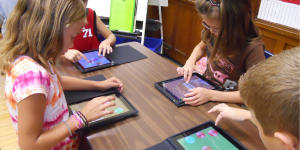How to set up a reading challenge?

Learning to read begins as soon as cycle 1 (in France) and is at the core of the fundamentals of cycle 2 (CP, CE1, CE2). To encourage pupils to read in a fun and exciting way, the reading challenge (or reading rally) is an exercise appreciated by teachers and pupils alike.
How does the reading challenge work?
The reading challenge is built as a game whose goal is to make the pupils read a certain number of books in a given time. A contract is therefore established between the teacher and the pupils: the latter commits to reading the books chosen by the teacher.
Choosing the theme of the reading challenge
It is up to teachers to choose the theme of the reading challenge according to the topics they wish to address with the pupils. It can be a common theme (winter, animals, tolerance, space…) or a specific genre of book (tale, novel, fantasy…). The books selected must match with the pupils’ skills in terms of difficulty and fit into their progression.
How many books for your reading challenge?
The number of books generally starts at 3 and can go up to 10, depending on the time allotted to read and how the teacher intends to evaluate the challenge’s results.
It is important for the teacher to remind the pupils that the goal is not to read the books quickly but to read them at their own pace since this is a reading exercise.
How long does a reading challenge take?
The time limit usually ranges from one to three weeks depending on the number of books to be read and the length of the books (number of pages, length of text). The time limit imposed on the pupils should not slow them down but rather encourage them to read and discover books to give them a taste for reading.
Why do a reading challenge?
The reading challenge is a fun and different way of approaching reading to awaken a taste for reading in pupils at a time when videos and video games are omnipresent. It allows both the pupils to develop their reading skills and the teacher to follow the progress of his pupils. In addition to reading, the teacher can provide a comprehension quiz at the end of each story to assess the pupils’ comprehension level.
At which levels can reading challenges be organized?
The reading challenge has the advantage of being adaptable to any class. It is especially recommended for cycle 2 since reading and writing are at the center of learning. Thus, the teacher can organize reading challenges in CP, CE1, and CE2, but also in cycle 3.
Reading challenge in class or at home?
The reading challenge can be done in class, even if it is more recommended at home. This way, pupils feel invested in their day-to-day lives and parents can support their children in their efforts.
Organize reading challenges with Storyplay’r
On Storyplay’r, it is possible to organize a reading challenge, or even several, as a teacher. With more than 1500 children’s books to read and listen to, Storyplay’r offers a large choice of books and themes. The reading challenge also takes on another dimension as it is possible to read the stories but also to listen to them thanks to the audio versions recorded by our professional storytellers. Gathering around digital stories that can be shared and studied remotely is now more relevant than ever.
Reading aloud and voice recording!
The icing on the cake is that the teacher can ask the pupils to read the books aloud and record their voices on the stories. Double benefit:
– The reading challenge becomes a read-aloud exercise;
– The teacher can follow and listen to the recordings made by each of their pupils from their designated teacher area.
Find our help to organize a reading challenge on Storyplay'r
The reading challenge is an excellent exercise to involve pupils in the discovery of books and to help them in their learning of reading. It is also a good way for the teacher to follow the progress of his pupils and to address the difficulties encountered.
The benefits of reading on a screen

It is almost self-evident: reading is good for the intellectual development of our children. Reading develops the imagination, fosters the ability to analyze and understand, enriches vocabulary, and allows independent access to knowledge.
Developing imagination and comprehension skills

Unlike video games and films, a reading experience with Storyplay’r without moving images involves an active approach on the part of the child and thus stimulates their cognitive and creative abilities.
Why read aloud? What are the benefits?

If there is one reflex that is ingrained in most of us, it is reading aloud. Don’t believe us? Then take a good look at the people who read and you will quickly realize that many of them read with their lips moving. They are very concentrated and sometimes even whisper. A real read-aloud reflex!












